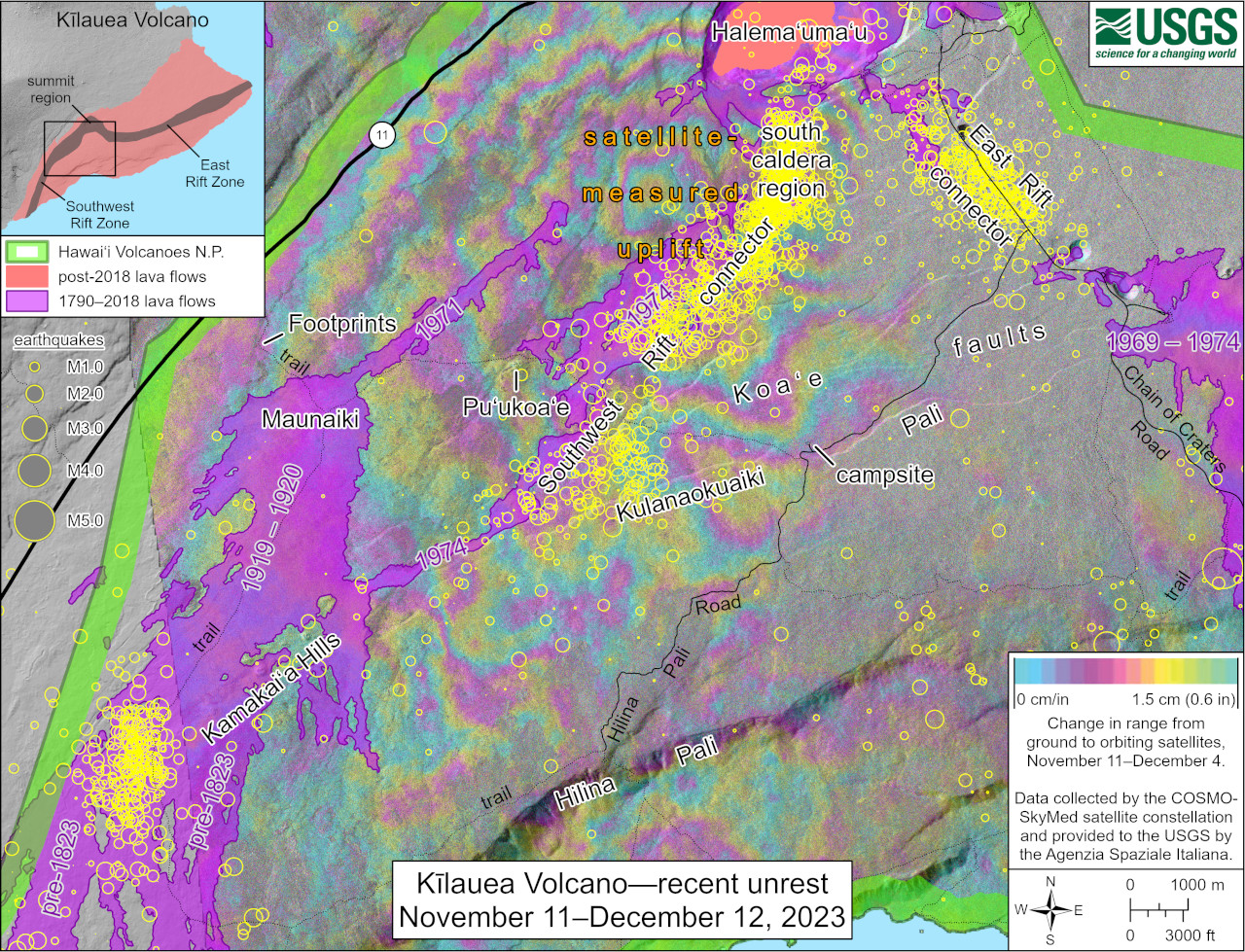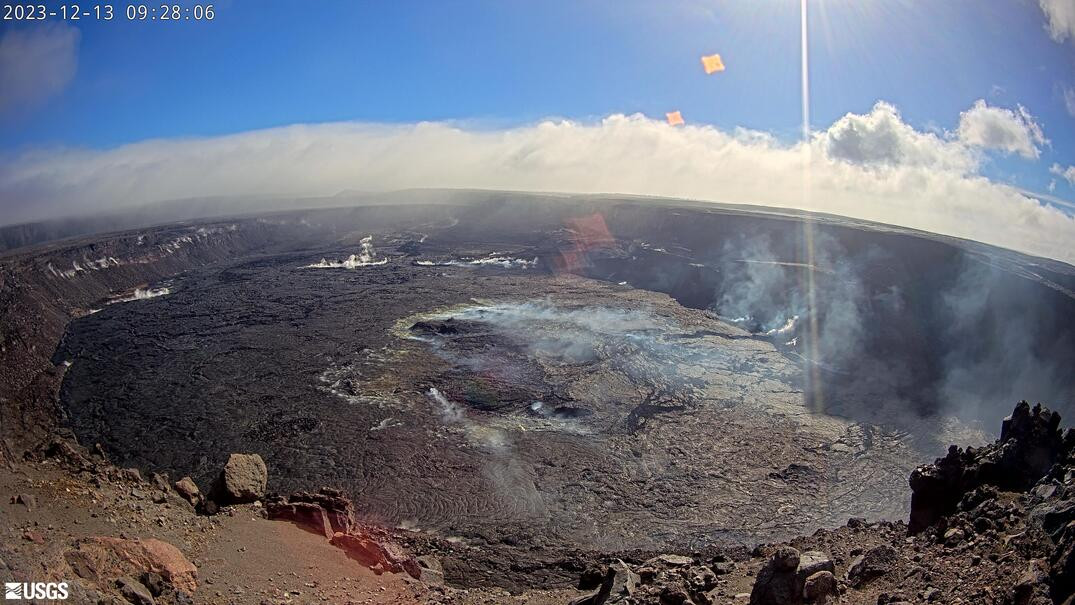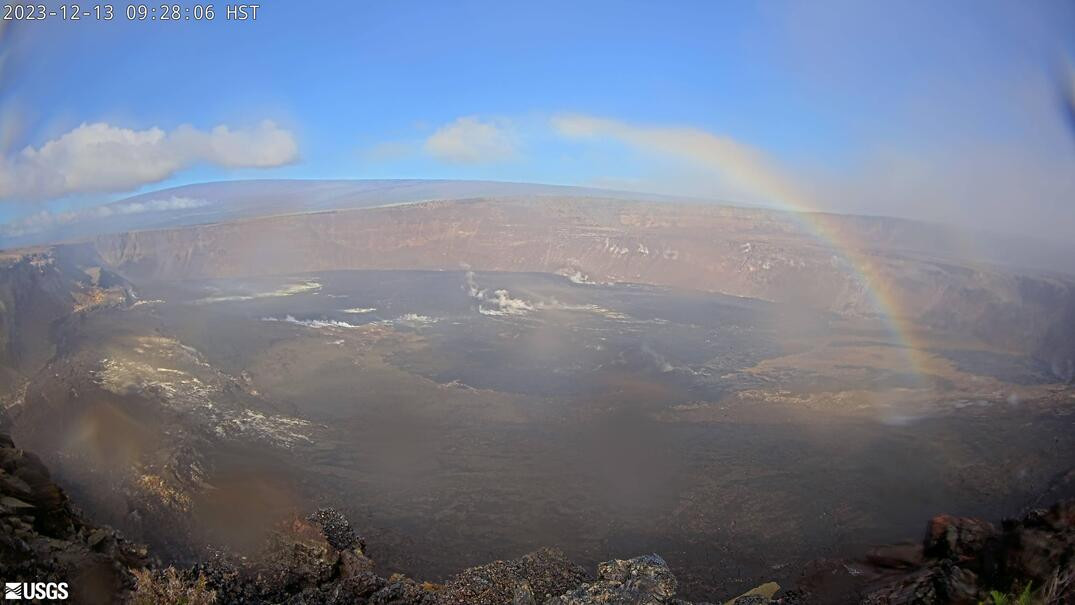
USGS: “This map shows recent unrest at Kīlauea volcano. Yellow circles denote earthquake locations from November 11–December 12, 2023, as recorded by HVO seismometers. Unlike previous maps of unrest in October and November, this one shows a new locus of seismicity in an area known as the East Rift connector. Seismicity continues along the Southwest Rift Zone, but at lower rates than previously observed. Colored fringes denote areas of ground deformation from November 11–December 4, as measured by satellite radar. Each color cycle represents 1.5 cm (0.6 in) of ground motion toward the satellite, indicating uplift associated with magma accumulation.”
(BIVN) – Kīlauea volcano is not erupting, and scientists have measured a slight increase in seismicity in the summit region over the past day.
The Kīlauea Volcano Alert Level remains at ADVISORY. After several days of lower earthquake rates, the USGS Hawaiian Volcano Observatory says moderate seismicity has returned to the summit, with activity focused in two clusters just south and southeast of the Kaluapele caldera.
Seismicity has also slightly increased in the upper East Rift Zone and Southwest Rift Zone, scientists report. No unusual activity has been noted along the middle and lower sections of Kīlauea’s East Rift Zone.
In Hawaiʻi Volcanoes National Park, only the Mauna Iki Trail is closed due to the volcanic unrest.
From the USGS HVO update issued on Wednesday morning:
Summit Observations: Seismicity in Kīlauea’s summit region has seen a slight increase over the past day, after several days of lower earthquake rates. Activity has been focused in two clusters just south and southeast of Kaluapele, the volcano’s summit caldera. Most of these earthquakes have had magnitudes below M2.0, but a handful of events have occurred in the M2.0–M3.0 range. Seismicity has not reached the levels that immediately preceded recent summit eruptions at Kīlauea.
The Uēkahuna summit tiltmeter—located northwest of the caldera—has tracked no significant tilt changes since midday yesterday, when there was a brief period of minor inflation. The Sand Hill tiltmeter—located southwest of the caldera—has begun tracking northwest-directed tilt over the past couple days. This is indicative of inflation to the south of Kaluapele, and it was a commonly observed signal in October and November 2023. Overall, the summit of Kīlauea remains at a high level of inflation; relative tilt is above the level reached prior to the most recent eruption in September 2023, and it is higher than at any time since the 2018 eruption.
Sulfur dioxide (SO2) gas emission rates remain low. Field measurements indicated an SO2 emission rate of approximately 70 tonnes per day on December 5, which was similar to measurements in October and November.
There are currently no signs of an imminent eruption, but the summit region remains unsettled, with a high level of inflation and continued seismic activity. The onsets of previous summit eruptions have been marked by strong swarms of earthquakes caused by the emplacement of a dike 1–2 hours before the appearance of lava, and these swarms are not being detected at this time.
Scientists continue to repeat that the volcanic unrest “may continue to wax and wane with fluctuating input of magma to the area, and eruptive activity could occur in the near future with little or no warning.”



by Big Island Video News9:49 am
on at
STORY SUMMARY
HAWAIʻI VOLCANOES NATIONAL PARK - There has seen a slight increase in seismicity over the past day, with activity focused in two clusters just south and southeast of the summit caldera.